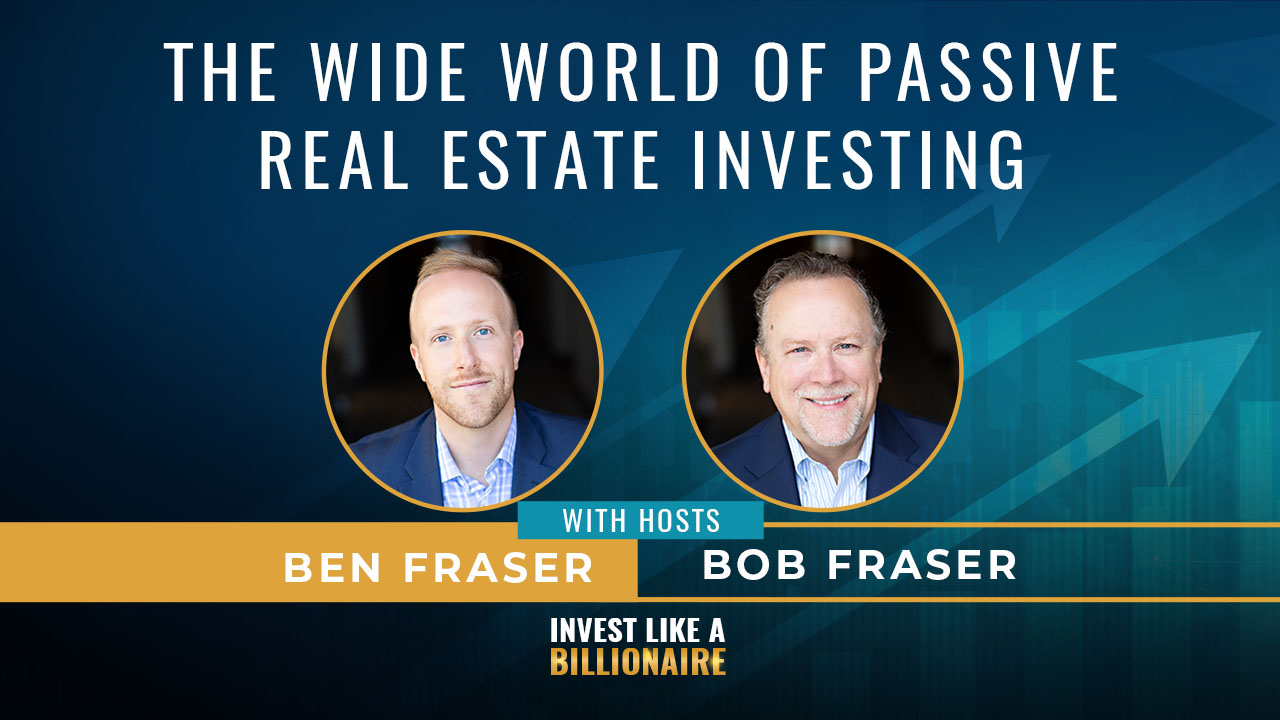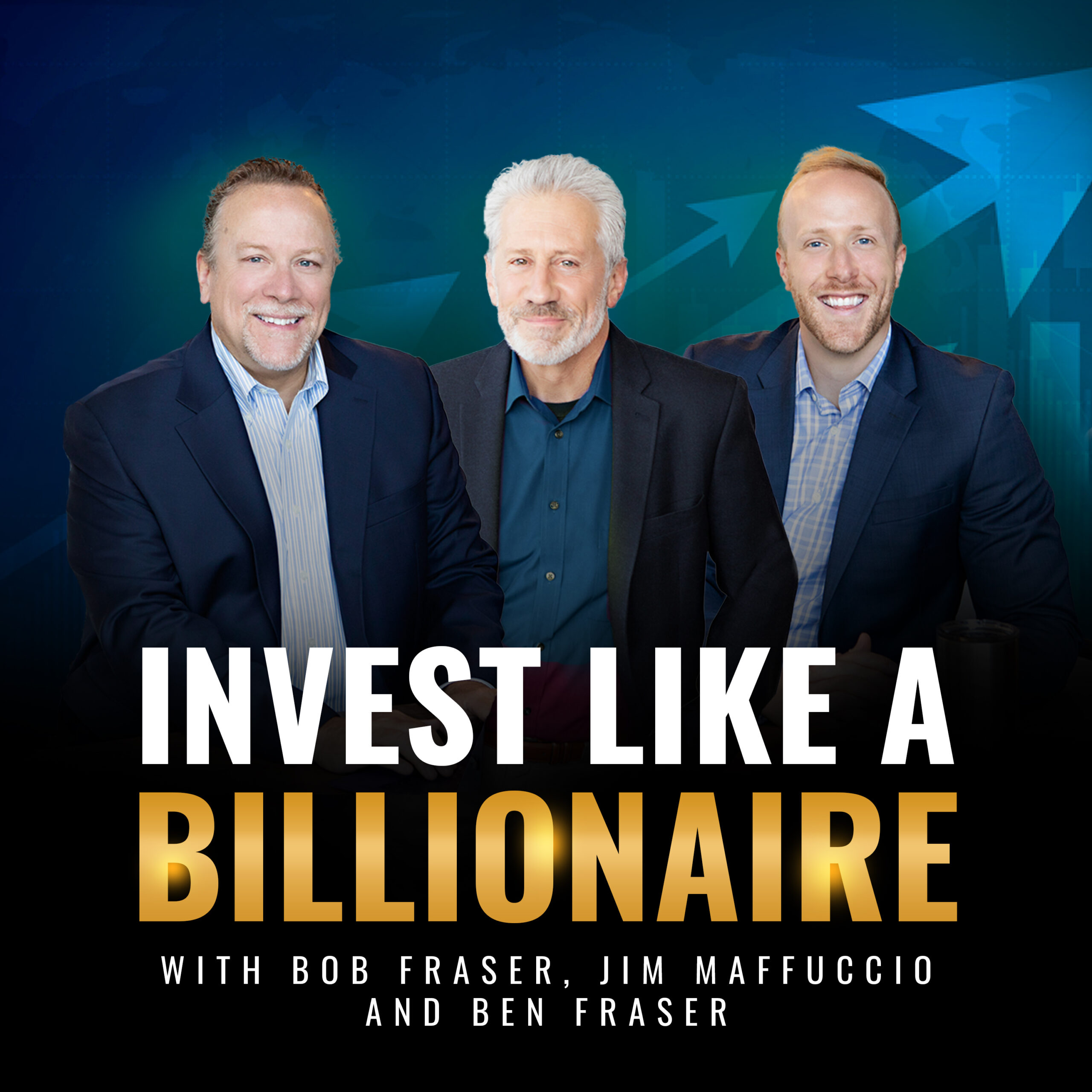
While most investors get excited about the idea of investing in real estate, that excitement quickly dissipates when they imagine buying rental properties and then dealing with difficult tenants and property maintenance issues. Thankfully, in the last decade there’s been a massive shift in the democratization of investing in real estate. Investors can now invest passively in a variety of real estate assets, without the headaches of traditional property ownership. But with this shift towards opening up the wide world of passive real estate investing, a new challenge has arisen. With so many options available, where do you even start? This episode will help create a framework for understanding the wide world of passive real estate investing and what is available.
—
Watch the episode here
Listen to the podcast here
The Wide World Of Passive Real Estate Investing
We’ve got an exciting topic which is passive real estate investing. This is a huge topic and some of our readers may be familiar with some different ways to invest in real estate. We want to break this down and help create the framework for the ways that you can invest in real estate passively, not just in the public markets through REITs but directly into these investments. Let’s take a quick step back.
The whole concept of this show is to invest like a billionaire. What we want to do is learn from the ultra-wealthy, the ones that have been very successful in investing. What are the strategies that they’re using? What types of investments are they making? What can we do as retail investors to use that term to emulate the best practices? How can we make our portfolios look more like theirs? We have this thing, the alternative investing continuum. Most retail investors are in the 60/40 portfolio, 60% stocks, 40% bonds.
The big difference with the ultra-wealthy is they’re for 40% to 60% into alternative investments. We have this framework called the alternative estimate continuum. On that, there are four different areas. We’re going to be looking at building a framework for real estate alternatives, which have some huge advantages over other traditional investing. We’re going to dive into what they are, when they work and when you should look out.
The big three of the alternative asset classes we’re going to be looking at in this show are real estate, venture capital and private equity and hedge funds. Of those three, real estate is the biggest by far and the one that ultra-wealthy investors are allocating to as a much larger percentage of their portfolios overall. It’s something we want to spend a lot of time on. It’s so big and almost hard to do this in one episode but we’re going to attempt it.
The whole goal here is to create a framework that will help our readers understand this world a little bit better so you can make better decisions. We’re going to discuss the pros and cons, different strategies that were used in different structures and how to evaluate different opportunities. The cool thing is, throughout this show, we’re going to be interviewing a lot of experts that are deep in specific areas of real estate so that we can learn from them and dive deep. We’re going high-level. I’m excited because Jim is a long-time real estate investor. You want to share a little of your background because it’s cool and ties in a lot to what we were talking about.
I had a first career as an engineer working in the corporate world and that lasted about five and a half years. I got the real estate bug. I was mentored by a guy initially who wrote an actual written book, not an eBook, on syndicating real estate. I was fascinated by it because this guy would put together people’s money. He would go buy it or build an apartment building. He started teaching me that. I got involved in small residential infill development projects in Southern California, which is a train wreck. It was a small player. It’s a small fish in a big pond. I’ve been in and out of just about every real estate especially in the residential sector. I haven’t done as much in the commercial but I’ve watched investors make good money and be closer to the investment. It’s real estate. It has been fun.
You moved to the debt side of residential, which is when you guys started Aspen Funds. We invest in residential mortgages, both performing and nonperforming. It’s a cool asset class. You’ve been all over the spectrum of development to the build side.
I built, tore down, rehabbed, lost and found homes. It’s just about everything you can do in real estate.
Before we dive into the strategies and types of investing, the two broad categories that we generally see are residential and commercial real estate. These are two very different types of categories in real estate. Residential is self-explanatory. These are either homeowners and single-family properties. There’s a lot of them but there are not as many ways to invest in them. There are a few strategies. One would be long-term rentals and short-term rentals like Airbnbs and what we do on the debt side. There’s hard money lending, distressed mortgages and other things in that vein. The interesting thing there in contrast to commercial is it’s driven mostly by comparable values. The commercial is driven a lot by the income it generates as a function of the cap rate.
The commercial is treated like a business. The residential is much different. They respond differently to market dynamics and interest rate dynamics. They’re different asset classes, even though you would think they would be related. They’re highly uncorrelated.
Most retail investors are in the 60/40 portfolio - 60% bonds stocks, 40% bonds, and 0% alts. Share on XOne of the big macro trends we’ve been looking at more specifically in residential real estate is the area we’re in. Bob is a side economist, hobby economist or what you want to call it that. He had a great track record and he tracks a lot of these trends in real estate. We want to talk a little bit about some of what we see in the residential side of things. It has been a fascinating time. Everyone is concerned and worried about, “It’s the next bubble. Prices are at all-time highs again. It feels outside of normal valuations.”
We’ve been bullish on calling for gains in residential markets since 2013. Since 2018, we have been calling for even a redoubled gain. We’ve been forecasting this latest push we’ve been seeing. We’re still forecasting. It’s still going up. We can dive into some of the reasons. There’s incredible demand because there’s a huge supply shortage and 100% of the fundamentals are behind residential. Real estate is tailwinds. That’s going to change at some point but for now, that is the case. We’ll dive into what those are in an upcoming show.
A lot of investors, when they start getting into real estate, residential investing is the easiest entry point for a lot of people because it’s easy to understand. They usually live at home and it’s where a lot of investors start but there’s a whole other massive spectrum of commercial real estate investing. We’re going to show some of the most common types of commercial real estate investing. That includes multifamily, apartment buildings, retail, industrial, hospitality, self-storage, mobile homes, senior housing and student housing. There are a lot of ways to invest there. Each one of those is its unique animal within this broader category of commercial…







